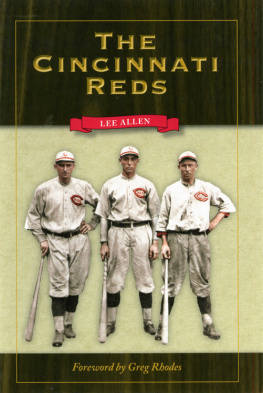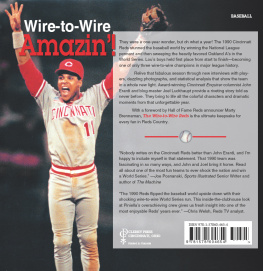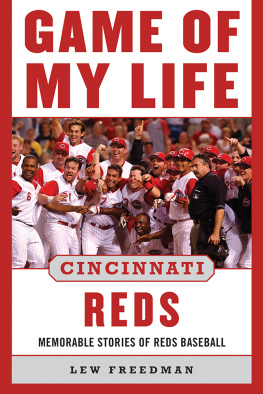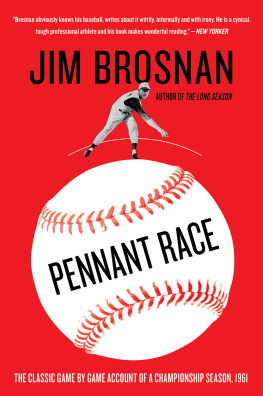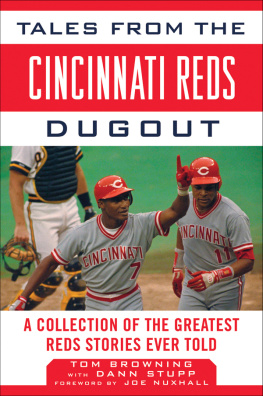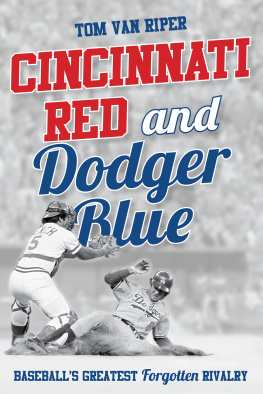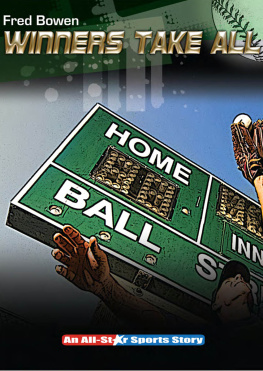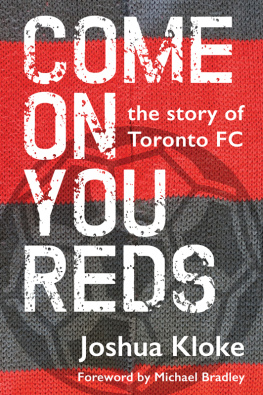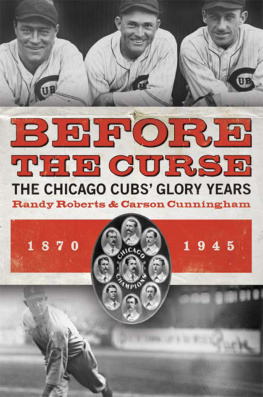All rights reserved.
The Cincinnati Reds / Lee Allen.
p. cm. (Writing sports series)
Originally published: New York: G. P. Putnams Sons, 1948, with a new foreword by Greg Rhodes.
Includes index.
ISBN-13: 978-0-87338-886-3 (pbk. : alk. paper)
ISBN-10: 0-87338-886-0 (pbk. : alk. paper)
I. Cincinnati Reds (Baseball team) History. 2. BaseballHistory.
I. Title. II. Series.
British Library Cataloging-in-Publication data are available.
In his photographs, he bears a slight resemblance to the comedian Don Rickles, with a friendly, perhaps mischievous, look on a large round face ready to break into a smile. And like any good comedian, Lee Allen was quick witted and a born storyteller, and his vast knowledge of his beloved National Pastime earned him the accolade Baseballs Walking Encyclopedia.
He was in great demand as a speaker. There is a flyer in his file at Cooperstown that heralds Lee as Lecturer, Raconteur, Author, Sportsworld Figure. His remarks often touched on amusing moments and coincidences of fact that kept his audiences enthralled. And after those speeches, Lee was the master of Q-and-A, his rapid-fire responses peppering the crowd with concise answers and entertaining embellishments to seemingly any question.
During his all-too-short lifetime, Lee Allen served as the historian of the National Baseball Hall of Fame and was one of the driving forces behind the publication of the first Macmillan Baseball Encyclopedias, published just after his death, in 1969. Lee wrote ten baseball books, including the one you hold in your hands, The Cincinnati Reds, originally published in 1948. Perhaps his best-known work was a collection of stories and profiles, The Hot Stove League, published in 1955. He also wrote a weekly column for The Sporting News called Cooperstown Corner; the Society for American Baseball Research (SABR) collected the best of these in Cooperstown Corner: Columns from the Sporting News, published in 1990.
Allen grew up in Cincinnati and quickly became immersed in the fortunes and history of the club that traced its roots to the first professional team, the 1869 Red Stockings. In 1931, at the age of sixteen, the familiar kid who always seemed to be hanging around the ballpark was noticed by someone in the Reds organization who gave Lee a job telephoning the scores of other games from the press box to the scoreboard operator. The pay was 75 cents. Allen later said he lost money on the deal, for he spent more than that on ice cream, pop and peanuts, a generous food allowance in the Depression years. Allen was the son of Alfred Allen, a noted Cincinnati lawyer and congressman.
In 1938, fresh out of Columbias journalism school, Lee joined the Reds full time in their publicity department, where he served until the mid-1940s. According to John Murdough, who worked in the Reds front office at the time, Lee was a character who could sometimes let a situation get out of hand. One day a prospective player showed up unannounced at the Reds offices asking for a try-out. It was clear that this gentleman, something of a hayseed, had no idea how scouting was done. He simply thought he was good enough to play for the Reds, and so here he was at the Reds doorstep. Lee decided to have a little fun with him and pretended to conduct a tryout right in the office. At one point he sent the man sprinting down the hall and yelled at him to slide. The prospect badly wrenched his ankle, and Allen had a problem on his hands. Lee took him to a hospital, had the ankle treated, paid for it out of his own pocket, and bought the man a bus ticket back home. It was, according to Murdough, the first and last tryout Lee Allen ever conducted.
For baseball history, this was the right career move. Allen proved far more adept at researching past players than scouting future ones. My concern is the players, he once said. Who are these men? What are they? What problems have they faced? Where are they now? His insatiable curiosity and determined detective work led him to big cities and small towns, visiting libraries, historical societies, and newspaper offices. He corresponded with hundreds of relatives and associates of deceased players, tracking down essential biographical information. Nearly every newspaper story about Lee Allen included some reference to his graveyard sleuthing.
Many of Lees investigations provided fodder for the banquet circuit, where he told stories of a chance encounter or dogged search that finally ended in the confirmation of the birth or death date of some long-forgotten player. Once when searching the whereabouts of a member of the Reds from the 1880s, he secured the name of a widow of a former catcher who just might know what happened to the missing Red. I received a letter from the old lady, recalled Allen. It was a 16-page effort that was an attack on Franklin D. Roosevelt. She never got around to the baseball matter.
When he became the historian of the Baseball Hall of Fame in 1959, he made completing the biographical record of every player a project for the Hall. Of course, he wasnt starting from scratch. When he moved to Cooperstown, he brought his files with himall fifty-five cartons of books and papers weighing some 5,000 pounds. It was the largest private baseball library at the time. His reference material and correspondence remain in the library to this day, a gift from Lee to all future historians.
He produced millions of words on baseball, and it wasnt all biographical minutia. Allen could write. He once described Babe Ruth as a large man in a camels hair coat and a camels hair cap standing in front of a hotel, his broad nostrils sniffing at the promise of the night. In of this Reds history, Allen reports that when pitcher Rube Benton, who played for the Reds in the 1910s and 1920s, was asked by the National League to prove a gambling charge he had leveled against his former manager, Buck Herzog, Benton said the deal was struck in a Chicago saloon, and NL president John Heydler accompanied Benton as he visited several drinking establishments. Allen writes, Rube was unable to locate the bartender who could verify his story, one of the few occasions in his life when he was unable to find a bartender.
The Cincinnati Reds is full of such anecdotes and wry observations. Lees obvious interest in the players and their lives off the field shows up on page after page of this narrative history. Its value for todays readers and fans resides in the personal details that convince you that Lee Allen must have known each and every one of these players.
Lees last appearance in Cincinnati came on May 18, 1969, fittingly at a ceremony at Crosley Field, where he began his baseball career as the press box boy some thirty-eight years before. The ceremony, on the occasion of baseballs centennial tribute to the first professional Red Stockings of 1869, honored the greatest players in Reds history. Lee presented one of the awards to Edd Roush, and after sharing stories with players and friends at a reception, he headed back home to Cooperstown. Driving through Syracuse, he suffered chest pains. He managed to reach a hospital, but there he died of a heart attack. He was fifty-four.

